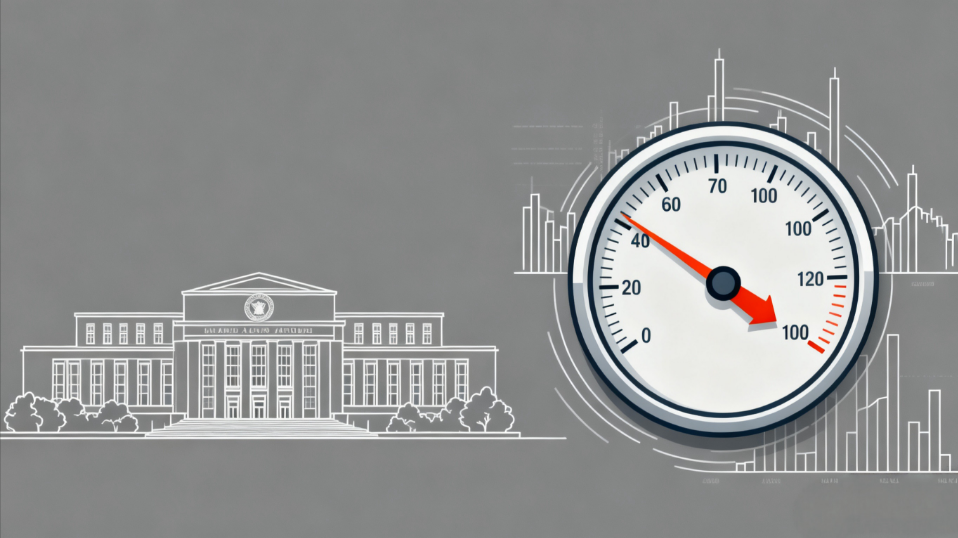
November 5, 2025 – The U.S. federal government shutdown has entered its 35th day, tying the record for the longest in history. This stalemate stems from disagreements between Congressional Republicans and Democrats over the budget bill: Democrats demand an extension of Affordable Care Act subsidies, while Republicans refuse to concede, leading the Senate to reject temporary funding bills passed by the House 14 times. During the shutdown, taxes are being collected as usual, but federal spending is largely frozen. Approximately 700,000 employees are on furlough without pay, airport security delays have cumulatively affected 3.2 million passengers, the Supplemental Nutrition Assistance Program (SNAP) is distributing only 50% of benefits, and some Head Start children's programs have closed. Economic impacts are already visible: the Congressional Budget Office estimates a weekly GDP loss of approximately $1.4 billion. If the shutdown continues, a liquidity crisis will become the greatest hidden danger.
Strained Signals in the Financial System's "Plumbing"
The U.S. financial system's short-term funding market relies on approximately $3 trillion in overnight repurchase agreement (repo) transactions. These transactions use Treasury securities as collateral, with banks, money market funds (MMFs), and primary dealers lending dollars to each other daily to ensure smooth payment clearing. The key indicator is the Secured Overnight Financing Rate (SOFR), which reflects the actual cost of borrowing. On November 3, 2025, SOFR was reported at 4.04%, 4 basis points higher than the Federal Reserve's Interest on Reserve Balances (IORB, ceiling 4.00%). It had broken above the ceiling for six consecutive days, with a 10-day moving average spread reaching 38 basis points.
The Fed does not set a single rate but rather a corridor: the lower bound is the Overnight Reverse Repo (ON RRP) rate (4.00%), and the upper bound is the IORB and Standing Repo Facility (SRF) rate (4.25%). Normally, SOFR should fluctuate below the upper bound. However, since September 2025, SOFR has repeatedly pierced the upper bound. SRF usage hit a record $50.35 billion on October 31, and reached $29.4 billion again on November 3, indicating private market reluctance to lend and forcing institutions to turn to the Fed for help.
The unsecured side is also under pressure. The Effective Federal Funds Rate (EFFR) sees daily trading volume of $8-9 billion, with its October moving average 12 basis points above the ON RRP rate. Dallas Fed President Lorie Logan warned on October 31: "If the recent rise in repo rates is not temporary, the Fed will need to initiate asset purchases (QE)." Chairman Powell also pointedly mentioned "strains in plumbing" in a November speech.
Treasury General Account (TGA): A Liquidity "Black Hole"
The TGA is the Treasury's "checking account" at the Fed. In normal years, the TGA targets a balance of $850 billion; tax inflows are quickly spent, replenishing bank reserves. Before the 2025 shutdown, the Treasury Secretary had replenished the TGA from $300 billion to $850 billion, exhausting the ON RRP buffer (leaving only $15 billion). After the shutdown, daily tax inflows of tens of billions continued, while spending nearly halted, causing the TGA to soar to $959 billion (weekly average as of October 29), a sharp increase of $150 billion from pre-shutdown levels.
Every $1 increase in the TGA drains $1 of reserves from the banking system. From July to October 2025, bank reserves fell from $3.4 trillion to $2.8 trillion, their share of M2 dropping to 13% – the last time it reached this level was precisely when three major banks, including Silicon Valley Bank, failed in 2023. The ON RRP is nearly depleted (only $51.8 billion on November 3) and can no longer act as a "shock absorber."
Triple Squeeze: QT + New Debt + Shutdown
-
Quantitative Tightening (QT)
The Fed is reducing its assets by $95 billion monthly, causing continuous reserve drain. The FOMC announced on October 29 that QT would end on December 1, but it may be too late. -
Massive Debt Issuance
The FY2025 deficit is $2.1 trillion, requiring the daily issuance of tens of billions in Treasury securities. Buyers need dollars ready upfront, further draining reserves. -
Shutdown Amplifier
If the TGA increases by another $50 billion weekly, it would drain $200 billion in reserves per month. The tax season (January-April) will add further strain.
The Fed's net liquidity indicator (Balance Sheet - ON RRP - TGA, inverted) surged over two months. The DXY dollar index rose to 108 over the same period, and the 10-year Treasury yield approached 4.8%. Bitcoin and the S&P 500 fell 1.1% and 0.8% this week, respectively, while the VIX rose to 21.
Crisis Transmission Path
-
Stage 1: Repo Loss of Control
If SOFR rises to 4.30% (SRF upper bound +5bp), primary dealers will collectively rush to the SRF, potentially pushing single-day usage past $100 billion, exposing reliance on the "lender of last resort." -
Stage 2: Reserve Scarcity
If the Reserves/GDP ratio falls below 11%, banks will shrink on-balance-sheet leverage and reduce Treasury underwriting. Regional banks will bear the initial pressure – three small and mid-sized banks already have non-performing loan ratios exceeding 5% in 2025. -
Stage 3: Credit Freeze
Money market fund redemption wave → Private repo market breakdown → Payment chain disruption. The probability of a repeat of the March 2023 SVB event rises to 30% (Goldman Sachs model). -
Stage 4: Systemic Shock
The Fed is forced to restart QE, buying $200 billion in bonds monthly. The 10-year yield plummets 50bp, the DXY dollar index crashes below 100, triggering失控 (loss of control) inflation expectations.
Fed Contingency Plans
-
Immediately Restart QE
Purchase $150 billion in bonds monthly until reserves return to $3.2 trillion. -
Cut IORB by 25bp
Stimulate bank lending and push down SOFR. -
Expand SRF Counterparties
Include more MMFs and foreign banks. -
Suspend New Debt Issuance
Treasury uses special measures (partially used in October).
Congressional Breakthrough Paths
-
Most Optimistic: Senate leaders Thune (R) and Schumer (D) reach a compromise on November 6, the House reconvenes on November 10, and temporary funding lasts until January 2026.
-
Most Pessimistic: Shutdown drags into December, TGA exceeds $1.1 trillion, SOFR surges to 4.50%, triggering a "flash crash."
Investor Response
-
Cash is King
Increase holdings of 3-month Treasury bills (yield 4.15%). -
Hedge Tail Risks
Buy VIX call options, gold ETFs. -
Monitor Triggers
Reduce risk asset exposure if SOFR consistently breaks above 4.10% or SRF single-day usage exceeds $50 billion.
Conclusion
A government shutdown is inherently political theater, but against a backdrop of depleted liquidity, it has evolved into a systemic threat. The Fed has flashed a red light: SRF usage on November 3 hit a post-pandemic high. If Congress delays another week, the TGA will drain another $100 billion in reserves, potentially causing SOFR to spiral out of control. History tells us the 35-day shutdown in 2018 caused only a 0.1% GDP loss, but today's reserves are only 70% of the level back then, and the ON RRP buffer is exhausted. Any slight disturbance could ignite the powder keg. Reopening the government is the only key to preventing crisis.
















